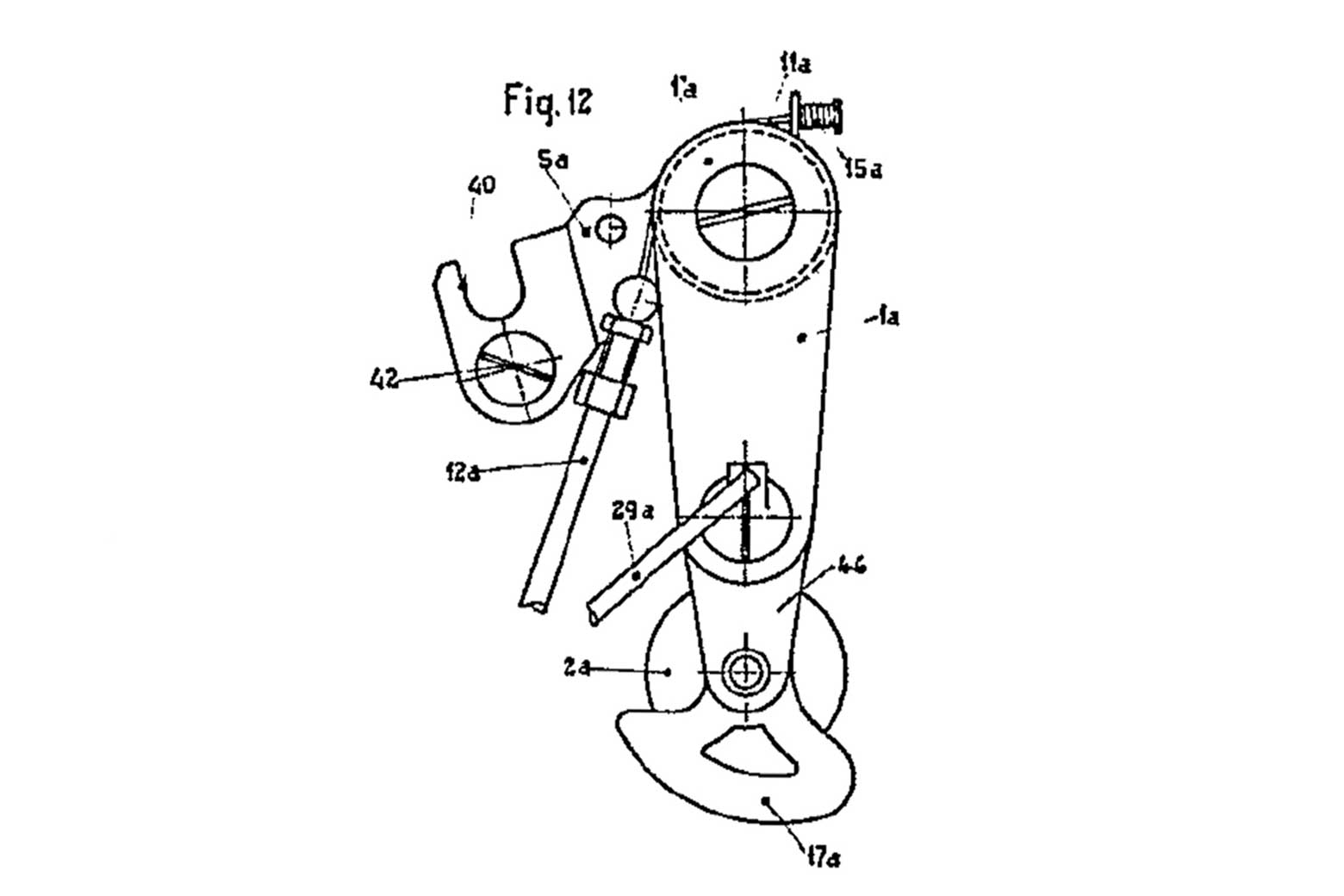


DISRAELI DOCUMENTS
The Vittoria brand illustrates a recurring truth about family businesses. For every success story, replete with heart-warming 'family values' and admirable 'investment for the long-term', there are a couple of dozen failures, riven with bitterness, resentment, pig-headed obstinacy and unacknowledged incompetence. Surely we have all looked around that dinner table at Christmas and thought 'How could anyone even think of working with these people?'.
Vittoria was set up by two brothers, Tommaso and Amedeo Nieddu, sometime in the 1920s. I believe that they were based in Torino, Italy although some of the patents mention Rivara, a few miles to the north of Torino. Frank Berto says that, before starting his derailleur business, Tommaso was a postal clerk in Torino.
They developed their first derailleur system, which I think was simply called 'Vittoria' in 1927. I believe that this sytem used a chain tension arm mounted below the bottom bracket (like a Super Champion) but with a derailling fork on the top of the chainstay that changed gear when you pedalled backwards. I believe that this design was used until about 1932.
In 1932 they introduced their signature design, the first Vittoria Margherita. This was, supposedly, named for Queen Margherita of Italy, noted for her extreme right wing, nationalist, views and her early tacit support for Benito Mussolini. The four leaders of the infamous March on Rome visited the aging Queen Margherita to pay their respects immediately before they set out.
This first design of Vittoria Margherita was extremely simple, strong and as effective as many of the competing 'racing' designs of the time (i.e. not very effective). It was widely used by Italian cyclists - who just happened to be particularly successful at the time - so it quickly acquired a winning reputation. While it has a very obvious chain tensioner/detensioner, it doesn't seem to have much of a 'derailing' mechanism, it seems to have involved the rider pushing the chain onto the desired sprocket using a finger or foot. This did not seem to faze Alfredo Binda - who won the 1932 World Championship Road Race using one.
In 1935 they kept the name Vittoria Margherita but improved the design, incorporating a cunning set of metal flippers on top of the chinstay to shift the chain - saving you from amputating your finger tips with the chain or back wheel. This basic design was used to win every Giro d'Italia from 1936 to 1940 inclusive. It was also used by Gino Bartali in his 1938 win in the Tour de France - only the second Tour in which derailleurs had been allowed.
In 1939, to celebrate Gino Bartali's victory the brothers introduced a Vittoria Margherita 'Giro de Francia' (good name!) with lush chrome, prominent branding and the ability to shift over 5 sprockets.
Sometime in the late 1930s Vittoria introduced a second, cheaper, model, a single pulley derailleur designed to compete with the Simplex Champion du Monde. It was, possibly, aimed at the younger and up-and-coming rider. I believe that they christened this derailleur the Vittoria Balilla. True to form, Balilla is the nickname of Giovan Battista Perasso, an 18th century figure who was adopted by the Fascists as a youth hero. The Italian version of the Hitler Youth was called the ONB, the Opera Nazionale Balilla.
As the 1930s drew to a close, Tommaso and Amedeo headed off to the Second World War, fired up to serve the glory of Imperial Italy, with Vittoria on top of the world. They had created one of a tiny handful of truly successful derailleur manufacturers.
On their return the brothers inevitably quarrelled. Around 1946, Tommaso, who was the technical brain, left to form a new derailleur company, called Cervino. Amedeo, who was the master of public relations and the sponsorship of pro cyclists, stayed, keeping the Vittoria brand - but he never came up with another really successful derailleur design to promote. As you can imagine, the split was less than amicable.
Post-war Vittoria derailleurs include:
I believe that, by the end of the 1950s both Vittoria and Cervino were out of the derailleur business.
I do not know if there is any relationship between the current Vittoria bicycle tyre company and Amedeo Nieddu's Vittoria business. The Vittoria tyre company claims on its web site to have been established in 1953 and to be based in Madone near Milano.